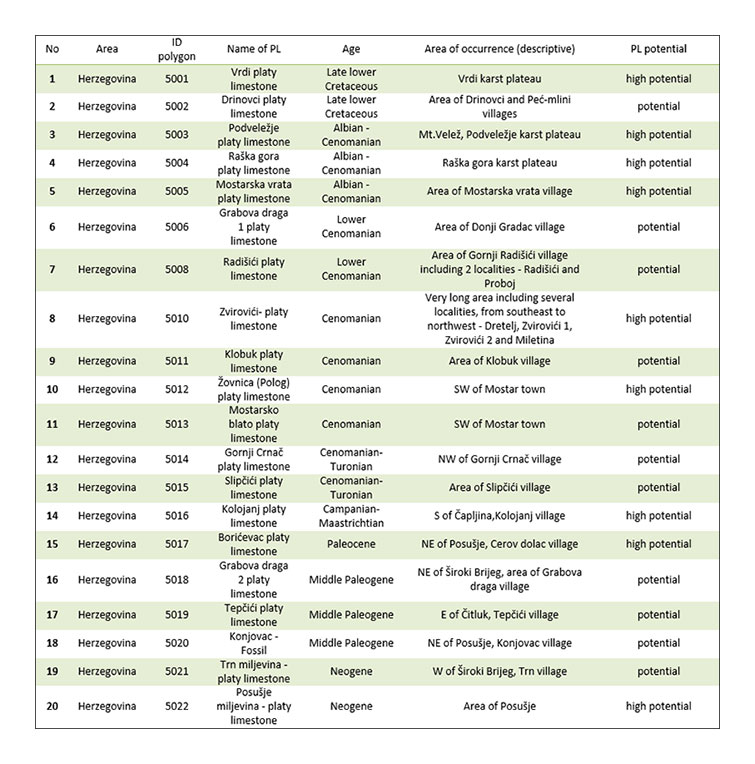Platy limestone – geologic definition and its use as a mineral commodity
Jernej Jež, Uroš Barudžija, Sara Biolchi, Stefano Devoto, Goran Glamuzina, Tvrtko Korbar
The most widely used as building material is the platy limestone from the Cretaceous period. The Cretaceous platy limestone occurrences are mainly located in the central and in the south-western parts of the project area, while those with platy limestone from the Paleocene, Eocene and Miocene period mostly occurs in the western part of the project area (Map 2.4).
General relevant data on important platy limestone types and their spatial occurrence are presented in Table 2.5 (see Appendix 2.4).
The largest spatial extents have PL types: Podveležje, Raška gora, Vrdi, Zvirovići, Drinovci and Boričevac. By far the most extensive is a Podveležje PL polygon which is up to 16km long and 6km wide. Numerous quarries of PL were recorded in this area, while limestone slabs from this region were widely used for roofing.
Raška gora PL is exposed over the area of approx. 6 x 0.6km on the Raška gora karst plateau, Vrdi PL over a 3 x 1km large region, Zvirovići PL cover an approx. 9.5 X 0.5km large area oriented in a NW-SE direction and the biggest quarry of PL in the project area in Herzegovina occur there, Drinovci PL is exposed over an area of 4.5 x 07km and Borićevac PL covers an up to 2 x 0.5km large polygon NE of Posušje, Cerov dolac village.
Other PL types (Table 2.5) are also very important but are mainly exposed in smaller areas or as local outcrops.











